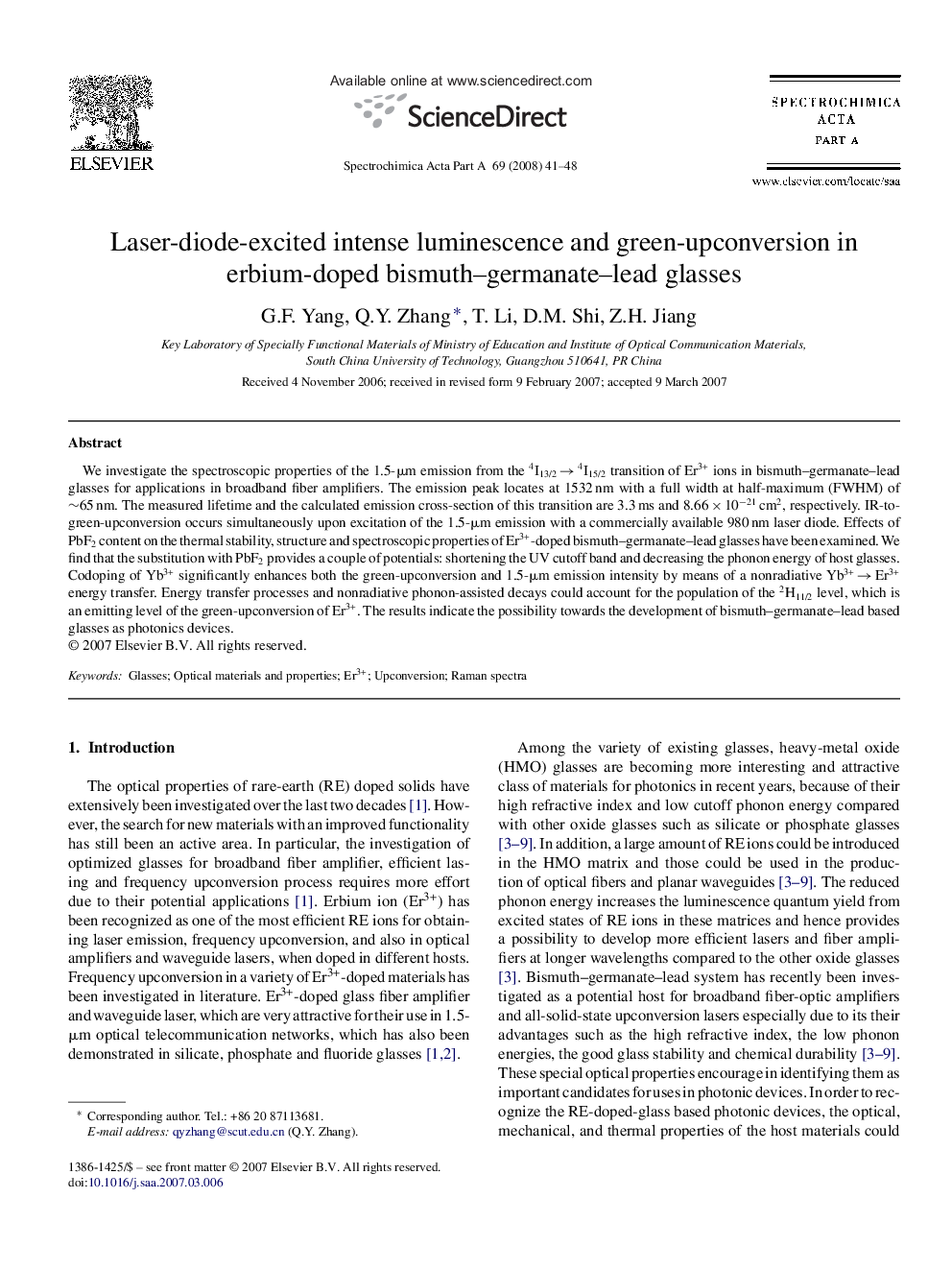| Article ID | Journal | Published Year | Pages | File Type |
|---|---|---|---|---|
| 1235239 | Spectrochimica Acta Part A: Molecular and Biomolecular Spectroscopy | 2008 | 8 Pages |
We investigate the spectroscopic properties of the 1.5-μm emission from the 4I13/2 → 4I15/2 transition of Er3+ ions in bismuth–germanate–lead glasses for applications in broadband fiber amplifiers. The emission peak locates at 1532 nm with a full width at half-maximum (FWHM) of ∼65 nm. The measured lifetime and the calculated emission cross-section of this transition are 3.3 ms and 8.66 × 10−21 cm2, respectively. IR-to-green-upconversion occurs simultaneously upon excitation of the 1.5-μm emission with a commercially available 980 nm laser diode. Effects of PbF2 content on the thermal stability, structure and spectroscopic properties of Er3+-doped bismuth–germanate–lead glasses have been examined. We find that the substitution with PbF2 provides a couple of potentials: shortening the UV cutoff band and decreasing the phonon energy of host glasses. Codoping of Yb3+ significantly enhances both the green-upconversion and 1.5-μm emission intensity by means of a nonradiative Yb3+ → Er3+ energy transfer. Energy transfer processes and nonradiative phonon-assisted decays could account for the population of the 2H11/2 level, which is an emitting level of the green-upconversion of Er3+. The results indicate the possibility towards the development of bismuth–germanate–lead based glasses as photonics devices.
